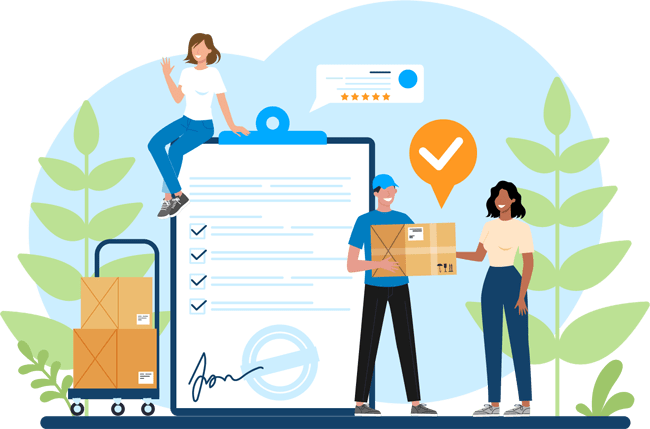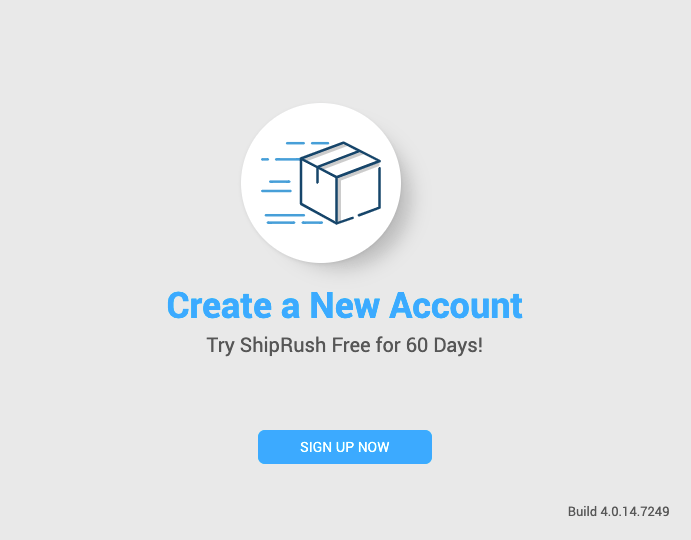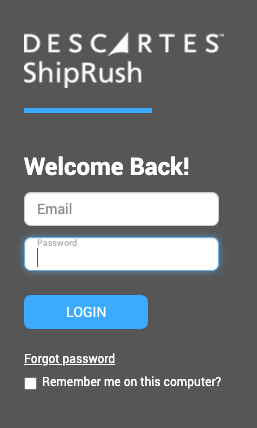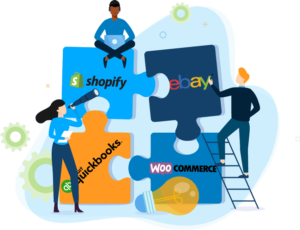
Selling on social media feels like playing the lottery. Maybe THIS product will be the one that blows up on TikTok and finally puts your ecommerce brand in the spotlight! The beauty of social media sales is that your business could go viral at any moment, which is both thrilling and terrifying.
That’s exactly what happened to Descartes Peoplevox customer Goodfair when their TikTok video went viral. (Here’s the viral video and story of how Goodfair scaled fulfillment operations after going viral.)
Maybe you’re already there. An influencer made a TikTok wearing your bag, and now your shop is crashing. Orders are pouring in, and it’s an emergency right now. Never fear! Descartes has three quick tips to tame the chaos, get your head above water, and help your ecommerce business ride the wave.
1. Streamline Your Shipping Process
You need to fulfill those orders fast, which means you don’t have time to type every customer’s order information into your carrier shipping website (i.e., USPS, FedEx, or UPS) or go to the store to drop off packages. Shipping software can solve both problems.
The software integrates with your shop or marketplace to pull your order information in. Then, it integrates with your preferred carrier(s), such as UPS or FedEx, to give you shipping choices. All of this is quick and easy to set up, and it doesn’t require any special skills. Boom, you’re ready to print labels.
Label your packages and contact your carrier to tell them you have parcels ready for pickup. They will come to your location FOR FREE and take your items to ship. It saves you a trip to the store.
Is shipping software expensive?
No, starter shipping software is not expensive. Many shipping solutions offer a free trial or a free shipping plan. For example, Descartes ShipRush Starter is always free with unlimited shipping for up to three users. You may want to buy a thermal label printer, though. They start around $100 on Amazon.
Bonus: You will save SO MUCH MONEY when you stop paying retail rates for shipping. Many software companies negotiate discounted carrier shipping rates and pass the savings on to you. Look for a shipping solution with carrier rate comparisons to get the best deals on shipping.
2. Stop Overselling Your Inventory
Does your shop know you’re sold out and delist your items until you have them restocked? Do you know how many items you have on hand for each product listed in your shop? If you have no clue what’s going on with your inventory, think about getting an inventory management system (IMS).
This program tames the chaos and helps you know what’s in stock. It also integrates with all your shops and marketplaces to keep inventory information up to date, preventing you from overselling (and getting punished by your marketplace and angry customers online). This means less stress for you and accurate shopping options for your customers.
We like Brightpearl’s order management system for this. It organizes all orders from all shops and marketplaces in one place for easy fulfillment. Not only will you get IMS capabilities, but Brightpearl also sets you up for accounting and customer relations management, among other things. Here’s some info about implementing Brightpearl.
How much does an inventory management system cost?
An IMS usually runs around $100 – $3,000 per month depending on how large your business is. Around $375/month is reasonable for an inventory management system with three users. Because this program will help you keep existing customers happy and coming back for more, it will pay for itself in repeat business.
3. Calm the Crazy in Your Warehouse
If you have a warehouse, that’s another whole level of chaos to deal with when you go viral on social media. When orders start piling up, how much time are your warehouse workers spending on “treasure hunts,” running all over the warehouse trying to find each item? In the meantime, your (new) customers are waiting longer and longer for their (first impression!) orders to arrive. Yikes.
Fast and accurate order fulfillment is LIFE to ecommerce businesses. But this is where many rapidly growing businesses fail. The process that used to work before you went viral isn’t efficient enough anymore. When you can no longer keep up with the pace of order fulfillment in the warehouse, it’s time for a warehouse management system (WMS).
What’s the difference between an IMS and WMS?
An inventory management system knows whether you have an item in stock or not, but it doesn’t tell you WHERE THAT ITEM IS in your crazy, chaotic warehouse. A warehouse management system, on the other hand, will tell you exactly where that blue, fuzzy cashmere hat with the pom-pom is so that you can grab it, slap a label on a poly bag, and get it gone. No more frantic searches.
A WMS will show you exactly where each item is at all times. In addition, you can create pick lists for orders to reduce walking time by 30-90%. With barcode scanning, you also virtually end picking errors and ensure your customer gets the right order, on time, every time.
Is my business big enough for a WMS?
A WMS sounds nice, right? But are you really big enough to need one? If you regularly ship at least 50 items per day, your business is big enough for a warehouse management system with mobile-based barcode scanning. Plus, because most warehouse management systems are easily scalable, you will be prepared to handle spikes in order volume when your ecommerce business goes viral on social media.
Descartes Warehouse Management Systems
Descartes offers three warehouse management systems: Descartes Peoplevox, Descartes Mobile Warehouse, and Descartes Pixi. Want more information about which one is best for your business?









